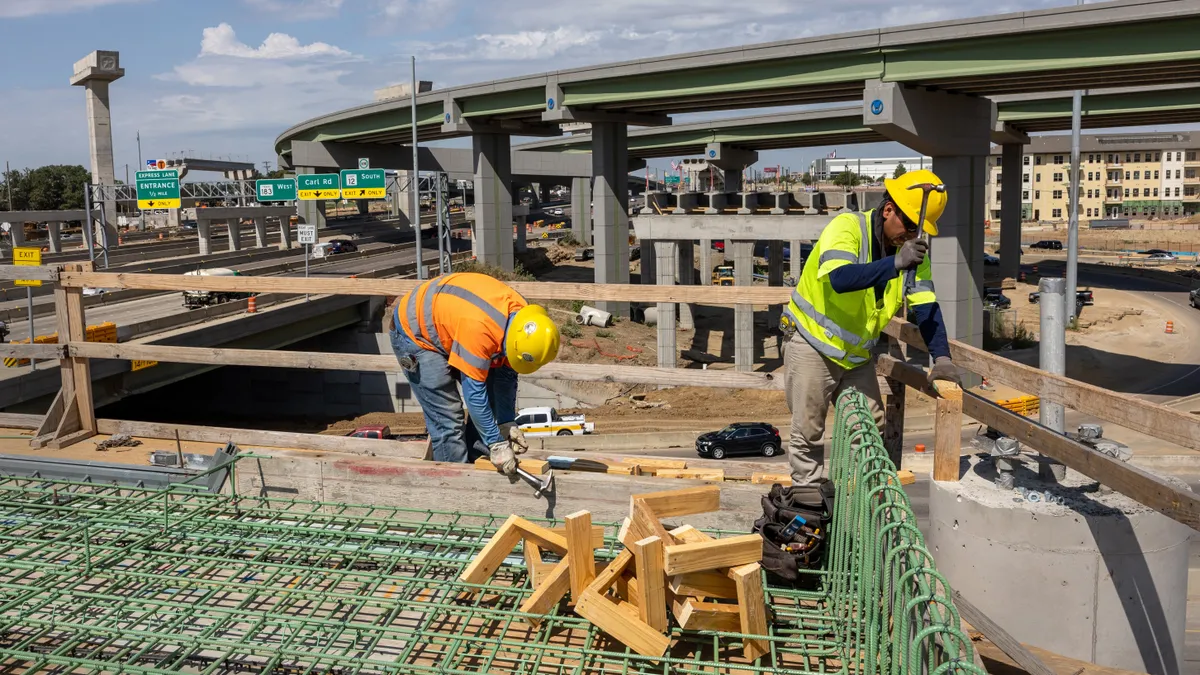Carlo Scissura is president and CEO of the New York Building Congress. Opinions are the author’s own.
The historic Infrastructure Investment and Jobs Act has begun pouring billions of dollars into improving our roads, bridges, transportation systems, broadband access and more.

This work will return the U.S. to the vanguard of infrastructure innovation and literally transform the nation. The building industry is proud to lead the way and grateful for the boon the IIJA provides after the devastation of a global pandemic.
Yet, despite all this good news, we’re struggling to fill job openings industrywide. Hundreds of thousands of construction positions are unfilled, and data suggests that the industry will need to attract nearly 550,000 additional workers in 2023 on top of these open positions to keep pace with the demand for labor.
There are a number of factors that landed us here — jobsites halted during the height of the pandemic, many workers retired early and competition for talent is fierce.
How we got here
In some ways, this is a crisis of our own making. Work-life balance and cost of living can be difficult to navigate in this industry.
We also don’t have adequate public funding for workforce development or training opportunities to invest in and retain our workforce. Recruitment efforts for young professionals entering the workforce are growing, but still thin. Architecture and engineering particularly could use an influx of hungry young talent.
Countless policies and programs exist to support and train the workforce, but they are often inadequately funded and inefficiently deployed due to bureaucratic red tape.
In order to address the barriers that are inhibiting the industry’s potential we need robust investment in a diverse workforce that has support and ample opportunity for upward mobility. Investing in these initiatives empowers individuals, bolsters the economy and ensures the continued vitality of the built environment.
Helping foreign-born workers help us
The building and construction industry has always provided stable, good-paying jobs to immigrants, creating pathways to the middle class. People born outside of the United States make up a quarter of the construction workforce, according to the Bureau of Labor Statistics. In order to maintain this strong labor force, we need to remove barriers that inhibit recent immigrants from pursuing jobs in the industry.
A frequently-cited hurdle for immigrants is fees for federal certification and required training courses, particularly OSHA training courses. High fees associated with certification can deter many aspiring workers, particularly those who may already face financial constraints. By reducing costs, we can empower a more diverse range of individuals, expanding our labor pool and fostering inclusion.
Funding existing legislation
We can’t forget about historic workforce wins from years past, either. The Workforce Innovation and Opportunity Act was a landmark initiative for job seekers and skilled workers nearly a decade ago, but today, it is underfunded and far from reaching its full potential.
We need to boost funding for this program to enhance its reach and effectiveness. Not only can this program help address the industry’s labor shortage, it creates pathways to meaningful and sustainable careers. It would also help to streamline and simplify visa categories specifically designed to meet the labor demands of the construction industry.
Tools in the IIJA
The IIJA offers its own significant workforce opportunities through grant programs that emphasize the expansion of job pipelines and promoting diversity.
The Rebuilding American Infrastructure with Sustainability and Equity (RAISE) grant, which helps communities build transportation projects that have significant local or regional impact and improve safety and equity, prioritizes applications thar broaden workforce opportunities for people of color and women.
Importantly, the IIJA also removes a prohibition on local hiring preferences for construction projects, which enables grantees to set goals around the share of work that is done by MWBEs and underrepresented populations.
This is critical — a recent U.S. Equal Employment Opportunity Commission report shows that women and people of color are underrepresented in the construction industry and especially in the higher-paid, higher-skilled trades.
Supporting workers who support us
Supporting our workforce goes beyond training and development. Wraparound support like ensuring child care centers open early enough to accommodate jobsite hours, or supplying housing options for workers on projects that are far from public transit access or town centers, is essential to retain talent — most especially for low-income workers and women.
These opportunities are ripe for the picking, and we need to ensure that cities and towns are informed and adequately equipped to take advantage of these important workforce programs.
We can’t afford to wait and see what will happen to our workforce if we continue to disinvest in their training, mobility and quality of life. The success and longevity of our built environment and infrastructure depends on supporting the people that make it all happen. After all, buildings are only as strong as the foundations these workers put in place.






















